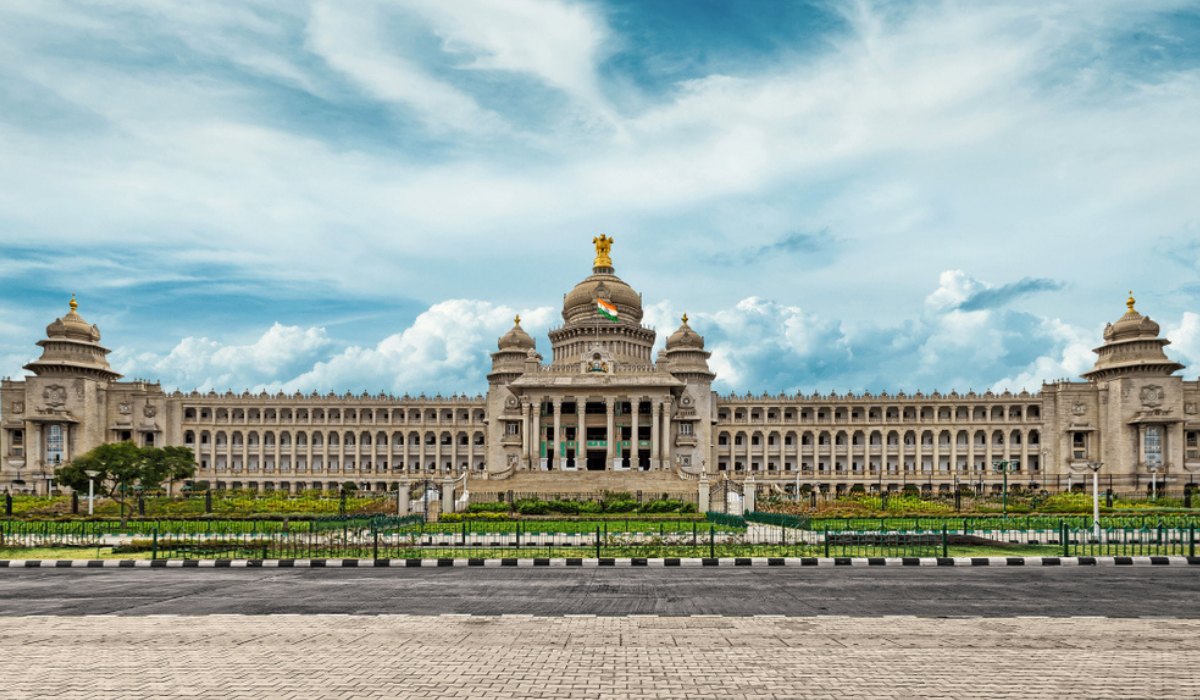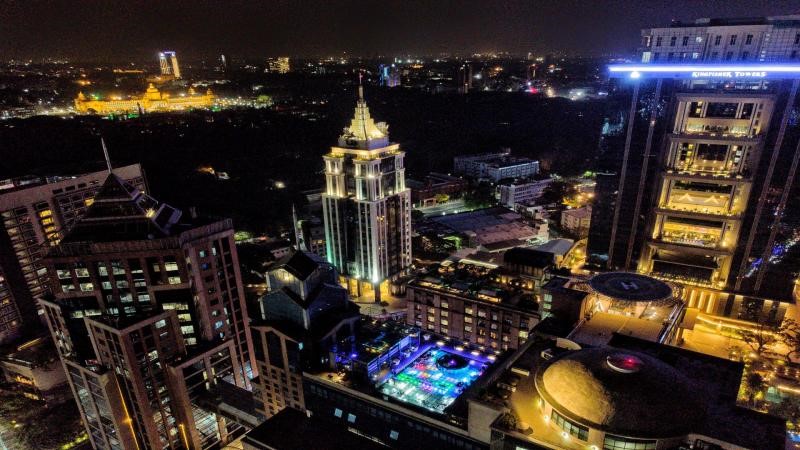


Bangalore, officially known as Bengaluru, is the capital and largest city in the state of Karnataka. It has a population of more than 8 million and a metropolitan population of around 11 million, making it the third most populous city and fifth most populous urban agglomeration in India. Located on the Deccan Plateau, at a height of over 3,000 ft above sea level, Bangalore has a pleasant climate throughout the year, with its parks and green spaces earning it the reputation as the "Garden City" of India.
History
The city's history dates back to around 890 CE, as found in a stone inscription found at the Nageshwara Temple in Begur, Bangalore. In 1537 CE, Kempé Gowdā, a feudal ruler under the Vijayanagara Empire, established a mud fort, considered the foundation of modern Bangalore and its oldest areas which still exist. After the fall of the Vijayanagar Empire, Kempe Gowda declared independence; in 1638, a large Adil Shahi Bijapur army defeated Kempe Gowda III, and Bangalore came under Shahaji Bhonsle and became his capital. The Mughals later captured Bangalore and sold it to Maharaja Devaraja Wodeyar II of the Kingdom of Mysore.When Haider Ali seized control of the kingdom, the administration of Bangalore passed into his hands.
The city was captured by the British East India Company after victory in the Fourth Anglo-Mysore War (1799), which then returned administrative control of the city, along with the kingdom, to Maharaja Krishnaraja Wadiyar III. The old city developed under the dominions of the maharaja. In 1809, the British shifted their cantonment to Bangalore, outside the old city, and a town grew up around it, which played as British residence in Mysore. Following India's independence in 1947, Bangalore became the capital of Mysore State, and remained the capital when the state was enlarged and unified in 1956 and after the state's renaming as Karnataka in 1973. The two urban settlements of Bangalore–the town and the cantonment– which had developed as independent entities merged into a single urban centre in 1949.
The existing Kannada name, Bengalūru, was declared the city's official name in 2006.
An apocryphal story states that the twelfth-century Hoysala king Veera Ballala II, while on a hunting expedition, lost his way in the forest. Tired and hungry, he came across a poor old woman who served him boiled beans. The grateful king named the place "Benda-Kaal-uru" (literally, "town of boiled beans"), which eventually evolved into "Bengalūru". Suryanath Kamath has put forward an explanation of a possible floral origin of the name as derived from benga, the Kannada term for Pterocarpus marsupium (also known as the Indian Kino Tree), a species of dry and moist deciduous trees that grows abundantly in the region.
Bangalore is considered to be one of the fastest-growing global major metropolises. The city is considered to be the pivot for high-technology-based heavy manufacturing industry, with numerous large multinational technology corporations setting up their headquarters in Bangalore. Bangalore is known as the "Silicon Valley of India" because of its role as the nation's leading software exporter as well as being a major semiconductor hub. Several state-owned aerospace and defence organisations are located in the city. The presence of numerous notable sporting arenas in Bangalore makes it one of the sporting hubs of the country.

Built with granite, Vidhana Soudha is the largest legislative building in India. The architecture includes elements of styles from the mediaeval Chalukya, Hoysala and Vijayanagara empires of Karnataka

Lalbagh is a 240 acres garden having over 1,000 species of plants with many trees that are more than a hundred years old.

The Bangalore Palace was the private residence of the royal Wodeyar family. Built to resemble Windsor Castle, this quirky palace is filled with an interesting and eclectic collection of art and paraphernalia from a bygone era.

Spanning an area of 260.51 sq km Bannerghatta National Park boasts of a Lion and Tiger Safari, with enclosures that recreate their natural habitat. There is also a snake park, a butterfly park, a zoo, and a nature camp for children within the premises.

The park is a storehouse of a variety of species of plants and trees that contains many inherent species of plants. The park is perfect for morning walks to succumb to the gulp of fresh air in the park.

Bangalore has a throbbing nightlife. Popular as one of the most vibrant metropolitans in the country, the Garden City caters to its partying crowd with an enviable range of pubs, bars, lounges, and nightclubs